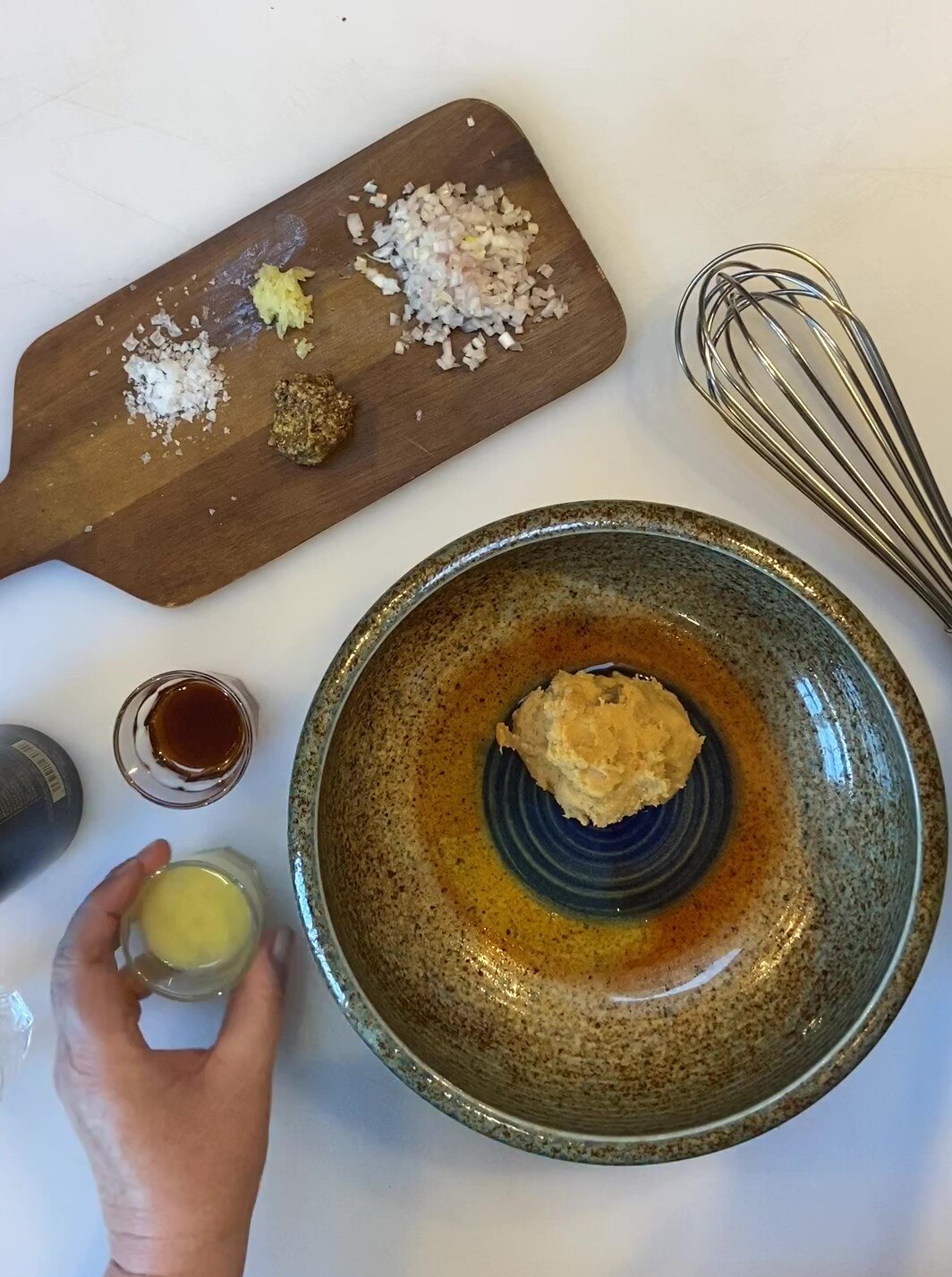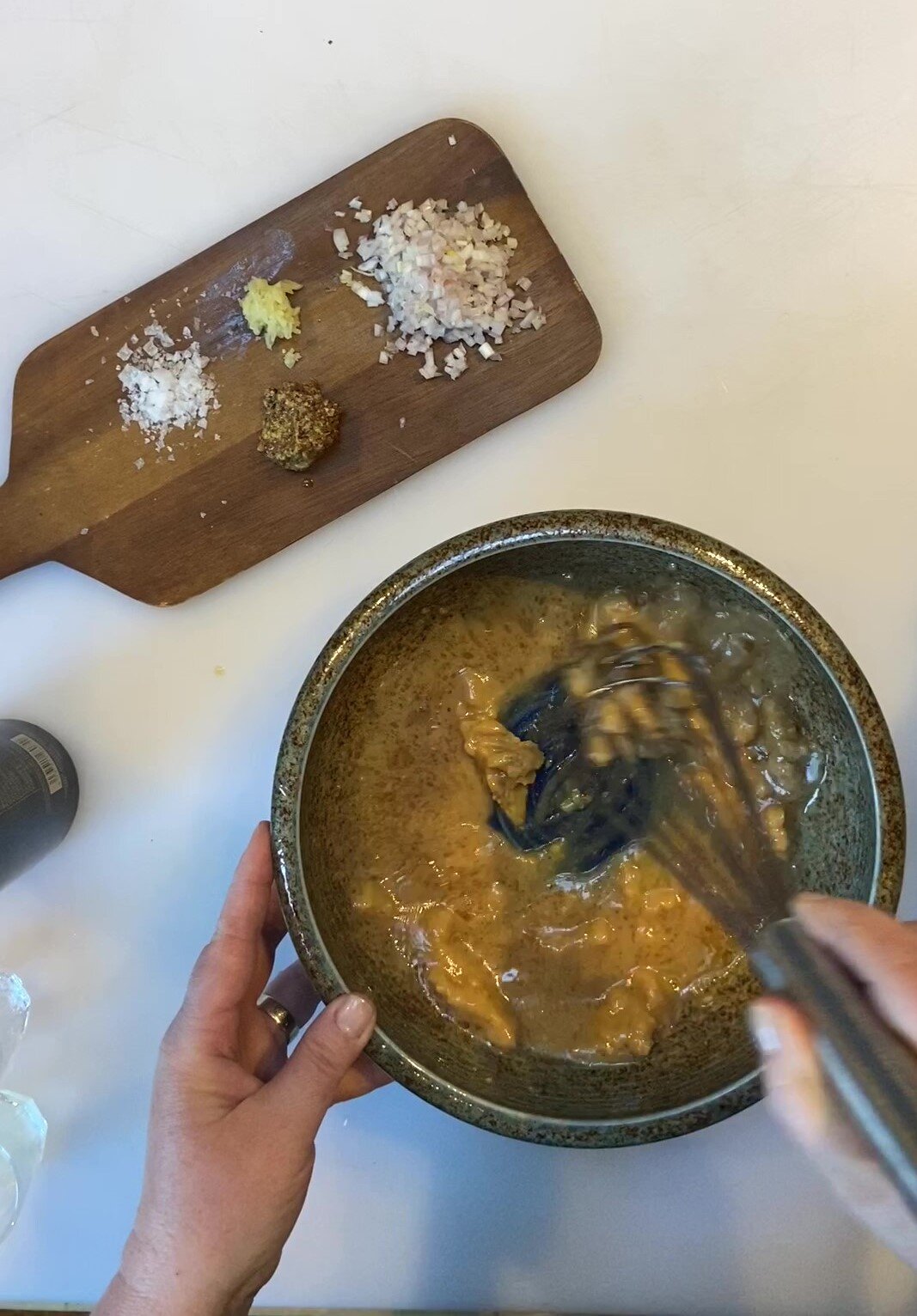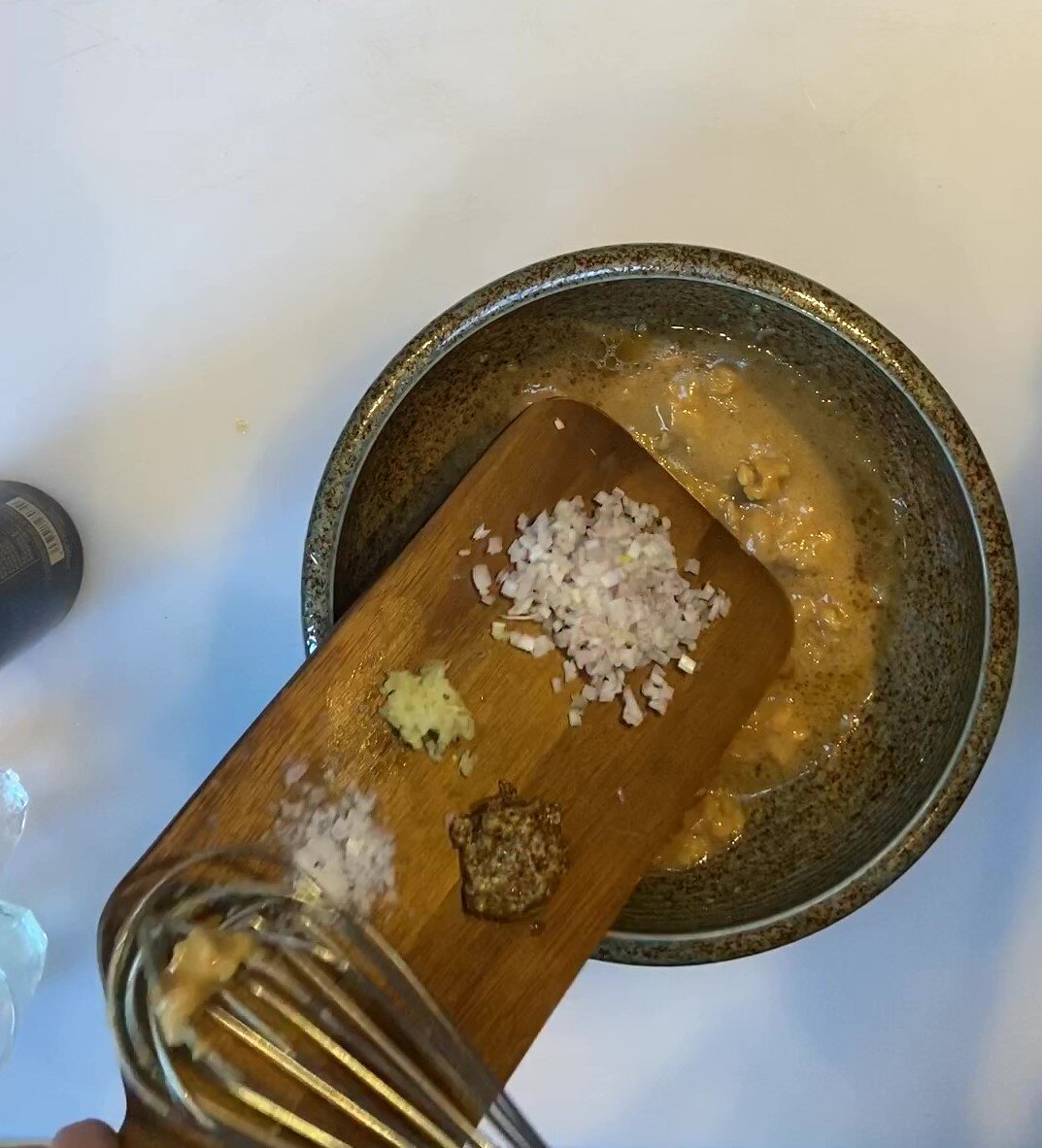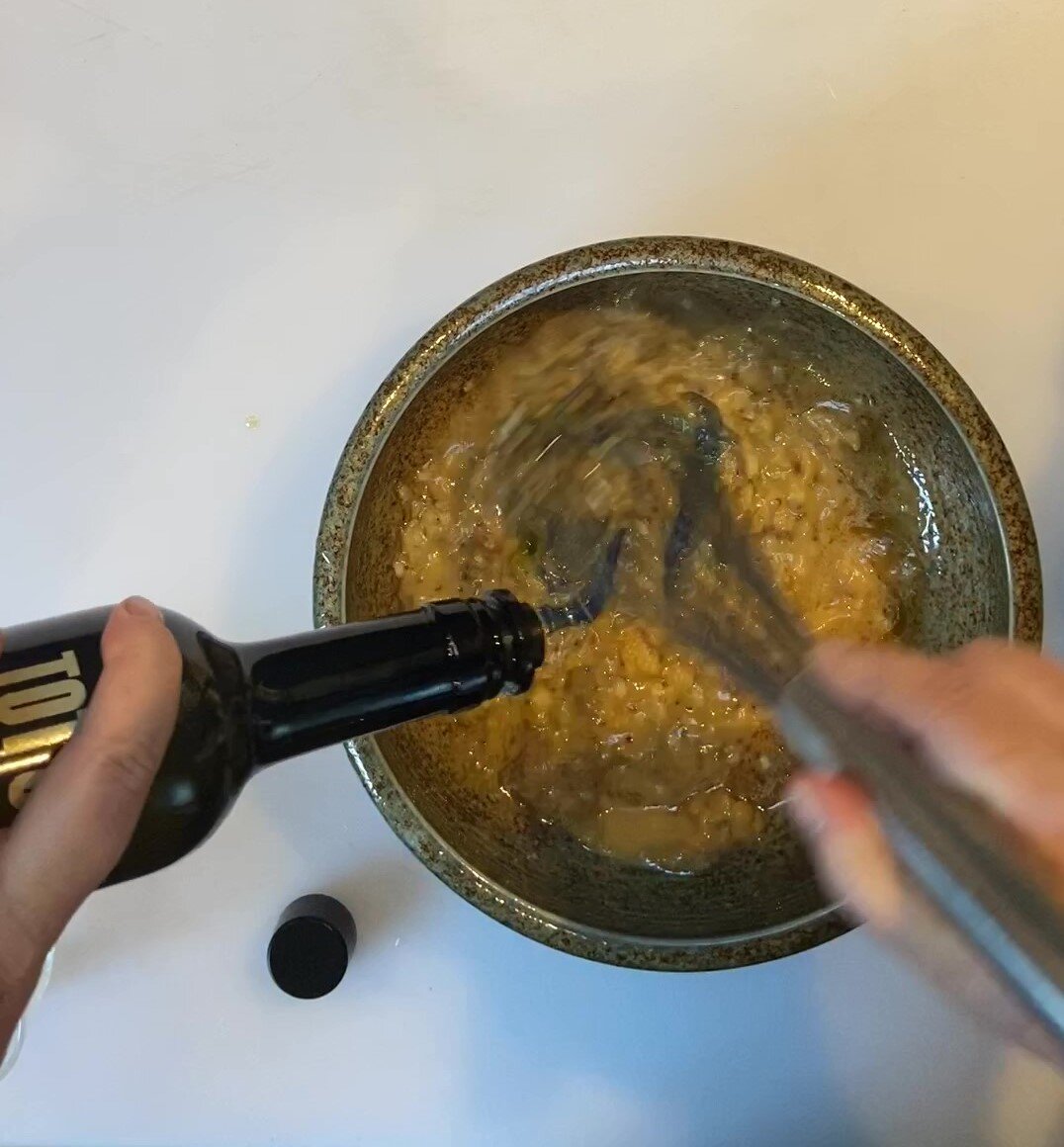Miso Dressing
This is an easy tutorial, but if you are not familiar with miso paste, I thought this step by step tutorial would come in handy. Miso paste is made from fermented soy beans, is plant based food with a high protein count (40%) and full of good healthy bacteria beneficial for our digestion and gut. Miso plays an important role in the traditional Japanese diet and is believed to be one of the contribution factors to Japanese peoples living long healthy lives. In this tutorial I have used a bowl and whisk, therfore ensure that the garlic and shallot onion is chopped extra fine so these are incorporated in the dressing well. Alternatively use a food processor or a pestle & mortar would be suitable too.
All ingredients should be available in larger supermarkets. But I do recommend a trip to your local Asian store for good value larger packs of miso paste which comes in 3 variations: white miso for sweets and desserts. Dark miso mostly used for more robust cooking like winter vegetable stews and meat. Tthe most common miso the medium yellow colored version used in soups, broths, marinates and dressings. The fermentation process uses either barley or wheat as catalyst for the koji. If you are intolerant to wheat do read the label carefully. If you are eating a diet just avoiding wheat the gluten left in the miso paste post fermentation is minimal and should not impact on your eating regime.
The miso last for at least a month open in the fridge. I do recommend making your own miso soup instead of the more commercial instant version to ensure you get the full nutritional and flavor profile out of your ‘miso cuppa’, I have a recipe for a vegan miso here.
In this miso dressing I have used local honey, but can be substituted with more commercial brands or agave for vegans. We are all part of our own bio-diversity, so even as urbanites we benefits greatly from eating honey produced locally and at the same time support an essential network of bi-growers; no bees, no polynation and no food eventually.
This miso dressing is great on Japanese Bean Salad, as a dip for raw vegetable crudities, like the Almost Raw Vegetable recipe, as a dressing for brown rice based donburi (Japanese predecessor to the Buddha bowl) or as a dipping sauce on edamame beans.
Makes 250 ml.
100 grams yellow (standard) miso paste
20 ml red wine vinegar
20 ml mirin
20 ml sesame oil
20 ml honey
juice of 1/2 lemon
1 tablespoon wholegrain mustard
1 large clove of garlic
1/2 small banana shallot
30-50 ml. good quality olive oil
Peel onion and garlic, the chop extra fine. Add miso paste to a mixing bowl, then add mirin, vinegar, honey and sesame oil and whisk until all incorporated. Then mix in garlic, shallot and wholegrain mustard. The msio dressing is almost ready, taste the dressing if it need a little extra honey and vinegar for sweetness or tartness before adding the oil. Drizzle in the olive oil gradually to create a smooth emulsion, check on the dressing when just over half the oil is incorporated as you may not need all, but aiming for a thick dressing similar to a smooth pancake mix.






